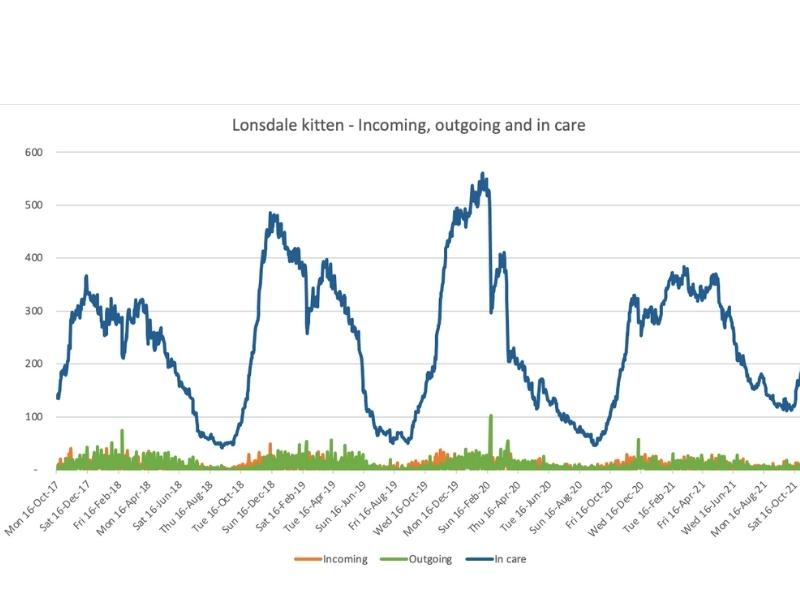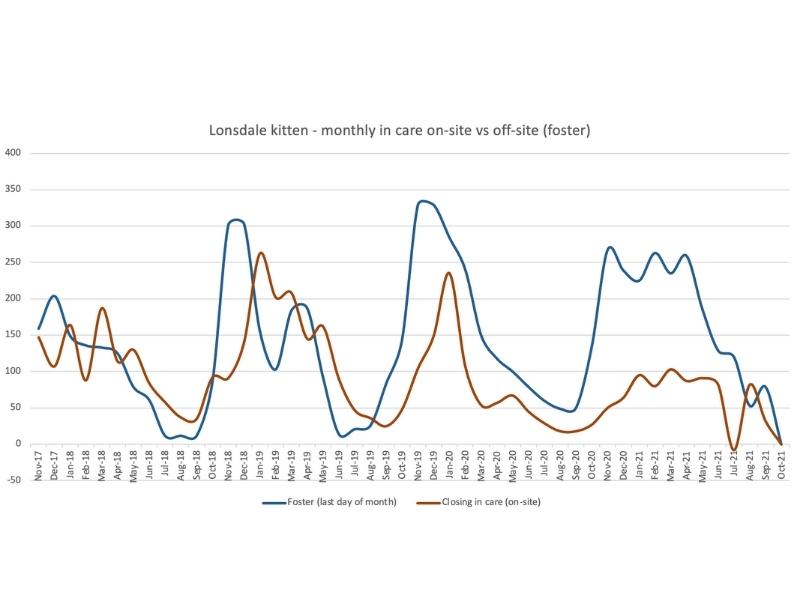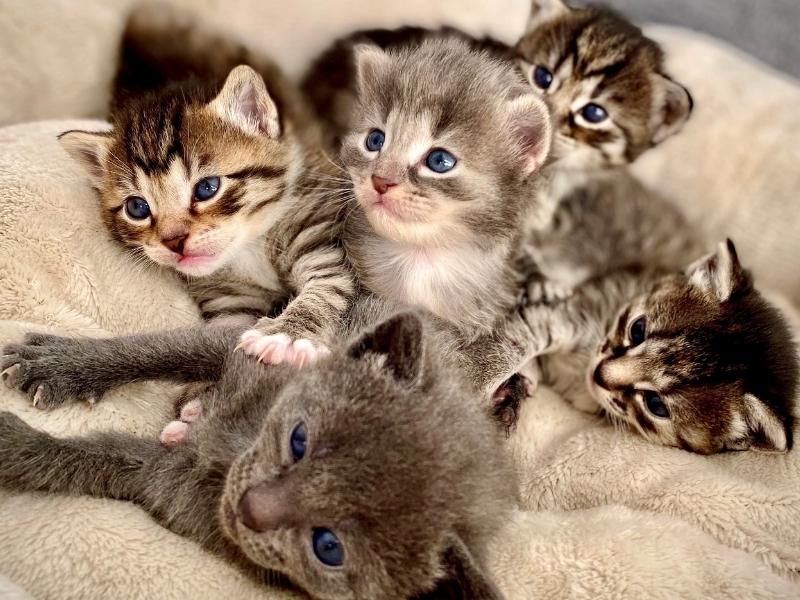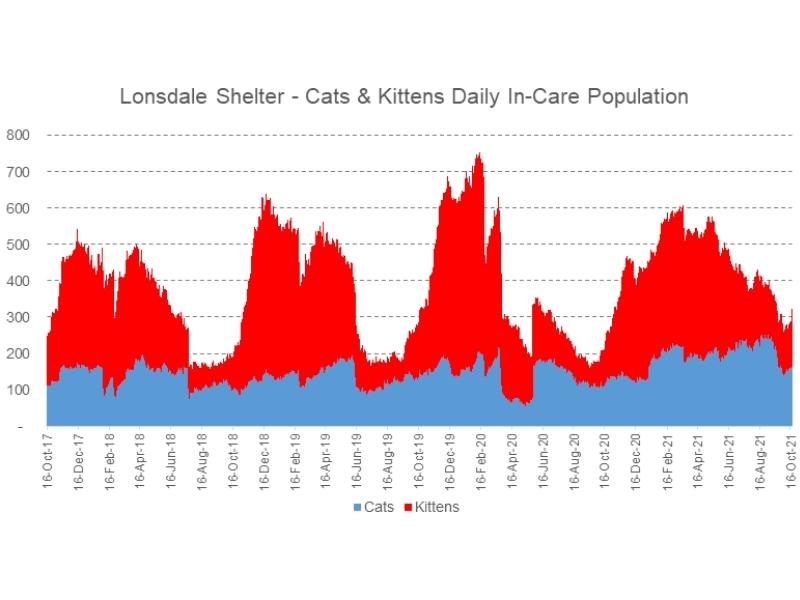The number of animals RSPCA South Australia takes in each year can be staggering. In the 2020/2021 financial year, a whopping 4,927 cats and kittens came through our animal care centres – more than twice the number of dogs and puppies (2,171). Suffice to say, caring for and rehoming cats and kittens is a goliath task.
Our annual intake of kittens, in particular, places an enormous strain on our resources and our three animal care centres, in particular our main centre at Lonsdale. Unlike the steady trickle of puppies, kittens come in waves and, as we approach summer, we are preparing for the tidal wave caused by SA’s annual kitten season.
Kitten season is a chart-topper
You could mistake the chart above for a weather chart, with October through to February seeing a dramatic spike of kittens in our care.
During these warmer months, our animal care centres are inundated with hundreds of furry little newborns, each a product of this period known as kitten season. As the days warm and lengthen, female cats start to come ‘on heat,’ and will seek multiple male cats to breed with. During February 2020, our feline intake number peaked at 752, a figure three times higher than it had been eight months prior, in the heart of winter (16 August 2019).

The delicate dance of cats coming in and cats going out
Kitten season heavily skews the Lonsdale’s Animal Care Centre’s delicate balance of incoming and outgoing kittens. Incoming kittens arrive at the shelter each day from various sources including owner surrender, unowned or ‘stray’ and via RSPCA’s Animal Ambulance team. A kitten’s outgoing journey can be into a new home, by being adopted directly from RSPCA or from our partner outlets (including Petbarn stores), or back to their own home after being reclaimed by their owners. The ‘in-care’ line on the graph (represented above in blue) is the number of kittens remaining in our care at the end of each day.
During spring, a large proportion of incoming kittens are too young to be made available for adoption. Newborns remain in our care for a minimum of 10 weeks, thus creating a sharp rise in our closing inventory (in-care) numbers from October through to February. After 10+ weeks, they are big enough to be desexed and adopted, (they are, of course, microchipped and fully vaccinated as well).
Looking at the graph below, you can see that towards the end of kitten season there is a sharp decline in numbers as we head into winter.

Onsite versus offsite care
Foster caring has become an integral part of RSPCA’s animal care operations. No matter how good the care is at our centres, animals always thrive more in loving, skilled foster homes.
This change in RSPCA’s animal care model, from in-centre to foster, began in earnest in 2018. Since then, we have seen overwhelming support from our community to care for animals in their homes. Since November 2018, there have only been seven months when more kittens were being accommodated in our Animal Care Centres than in the private homes of volunteer foster carers.

The 2021 kitten season is set to be the biggest one ever
As we edge closer to the summer spike in kitten numbers, we have already exceeded the numbers for the same time last year. We currently have about 520 felines in care – half of them cats and half kittens. Desexing is the ultimate solution and a legal requirement under SA’s Dog and Cat Management Act. But while we still have a lot of indiscriminate breeding, RSPCA is left to deal with the furry consequences.
Again, our foster volunteers will play a monumental role in providing care for felines over the summer, preparing them to find new homes in 2022. However, we need more foster volunteers to get us through this busy time! If you are interested in becoming a foster carer, please follow the link provided .









69cba92a-ea8f-44ce-bfec-4dab42e7e2c0.jpg?sfvrsn=a6461a8c_1)